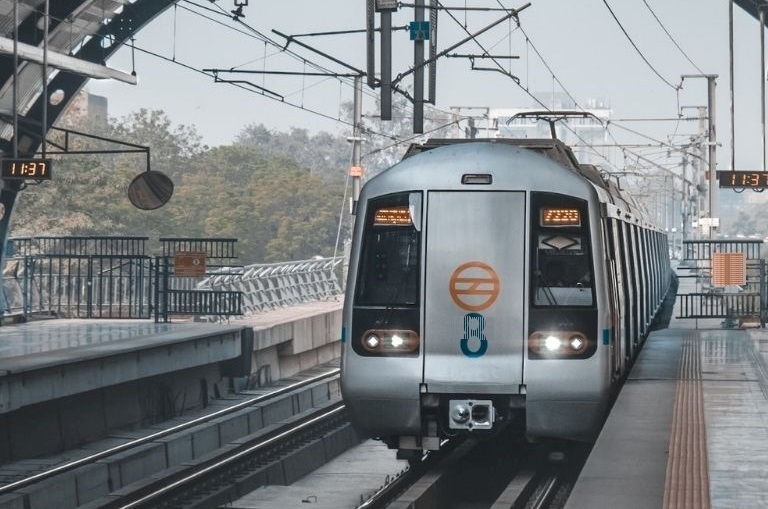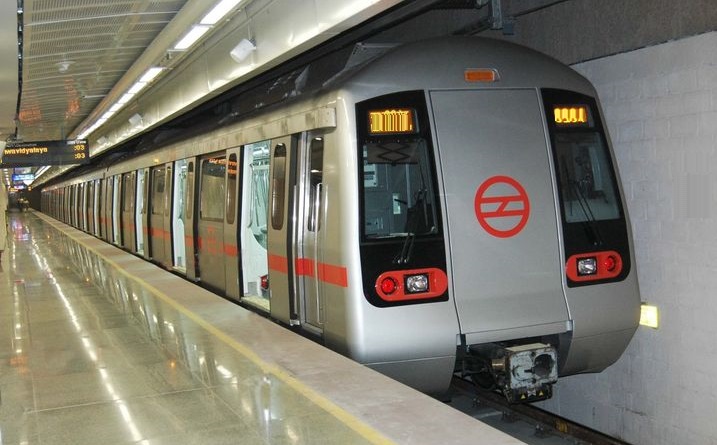T
he Delhi Metro became operational on December 25, 2002, a day after Prime Minister Atal Bihari Vajpayee inaugurated the DMRC’s first railway line from Shahdara (Shahdara) to Tis Hazari (Tis Hazari) with a total length of 13.2 miles and only 6 stations. passed.
To celebrate 20 years in service, Delhi Metro plans to run a special train on Saturday, which was announced by Vajpayee on December 24, 2002. “In an exciting moment for DMRC, a six-car special train will run from Kashmir Gate Station on the Red Line to Yingbin Station today,” a senior official said. A special exhibition will also be held in the lobby on Saturday to commemorate 20 years of activity.
Officials had earlier told PTI that the decline in the days after the first route opened in 2002 was “so huge” that officials had to issue “tickets” to deal with it. The introduction of state-of-the-art rapid public transport as a new mode of transportation in the city, at that time many people thought it was only temporary and DMRC had to publish articles in newspapers to attract attention. people’s hearts.
DMRC trains cover an average of 400-600 km every day and run for 16-18 hours, officials said. Archived documents such as old newspapers and rare images of the first pile driving job completed in the national capital Delhi Metro are being held at the DMRC for the permanent expansion of the network’s Kashmere Gate station by the end of December. year.
The ‘Tracing the Delhi Metro Journey’ program has been launched to commemorate 20 years of work of the Delhi Metro Rail Corporation, officials said. The red line has now been extended in both directions to reach Delhi’s new bus terminal (Shaheed Sthal) at Rithala and Ghaziabad.
Construction of the Delhi Metro
Construction of the Delhi Metro began in 1998. The first line, known as the Red Line, started operations on December 24, 2002. This marked the inauguration of the Delhi Metro Rail Corporation (DMRC) and the commencement of metro services in the capital city of India. Since then, the Delhi Metro has expanded significantly, with the addition of new lines and extensions to the existing network, contributing to improved connectivity and transportation in the region.

FIRST LINE OF THE DMRC
The first line of the Delhi Metro, known as the Red Line, commenced operations on December 24, 2002. Here is the list of the initial stations on the Red Line:
- Shahdara
- Welcome
- Seelampur
- Shastri Park
- Kashmere Gate
- Tis Hazari
- Pul Bangash
- Pratap Nagar
- Shastri Nagar
- Inderlok
These were the initial stations on the Red Line, and the network has expanded significantly since then, covering various parts of Delhi and its neighboring regions.
INAUGURATED BY SHRI ATAL BIHARI VAJPAYEE
The Delhi Metro Rail Corporation (DMRC) was inaugurated by the then Prime Minister of India, Atal Bihari Vajpayee. The inauguration took place on December 24, 2002, when the first line of the Delhi Metro, the Red Line, became operational. The Delhi Metro has since grown into a vast network, playing a crucial role in the public transportation system in the National Capital Region.
DELHI METRO RAIL ACADEMY (DMRA)
As of update in January 2022, there is an organization called the Delhi Metro Rail Academy (DMRA) associated with the Delhi Metro Rail Corporation (DMRC). The DMRA is responsible for providing training and education related to various aspects of metro rail operations.
The academy offers a range of courses and training programs in fields such as signaling, telecom, rolling stock, station operations, safety, and other technical aspects related to metro rail systems. These programs aim to develop the skills and knowledge of individuals involved in or aspiring to work in the field of metro rail.

A shot of an electric train in a railway
DMRC TUNNELS CONSTRUCTED
The Delhi Metro features a substantial network of underground sections, with numerous stations and tunnels constructed beneath the city. Some of the major lines with underground sections include:
- Yellow Line (Line 2): This line has underground sections between Central Secretariat and Kashmere Gate.
- Blue Line (Line 3): The Blue Line has underground sections between Dwarka Sector 9 and Barakhamba Road, as well as between Indraprastha and Yamuna Bank.
- Violet Line (Line 6): There are underground sections on the Violet Line between Central Secretariat and Sarita Vihar.
- Airport Express Line: The entire Airport Express Line (Orange Line) is underground, connecting New Delhi Railway Station to Dwarka Sector 21, with stops at prominent locations, including Shivaji Stadium, Dhaula Kuan, and Delhi Aerocity.
- Pink Line (Line 7): This line has underground sections between Lajpat Nagar and Nehru Enclave and between Mayur Vihar Pocket 1 and Trilokpuri Sanjay Lake.
- Magenta Line (Line 8): The Magenta Line has a significant underground stretch between Janakpuri West and Botanical Garden, connecting various key stations.
These underground sections involve the construction of tunnels, station structures, and associated infrastructure. They are crucial for providing efficient and fast transportation options in densely populated areas of Delhi and contribute to reducing traffic congestion on the surface. Keep in mind that the specifics may change with ongoing developments and extensions to the Delhi Metro network. For the latest and most accurate information, you may want to refer to the official website of the Delhi Metro Rail Corporation or other reliable sources.
NATIONAL CAPITAL REGION CONNECT TO NETWORK
Delhi Metro has expanded its network to connect various parts of the National Capital Region (NCR), including areas in the state of Haryana. Here are some of the key metro lines and connections that contribute to Delhi-NCR-Haryana connectivity:
Yellow Line (Line 2): The Yellow Line connects HUDA City Centre in Gurgaon (now Gurugram), Haryana, to Samaypur Badli in Delhi. It passes through prominent areas such as Qutub Minar, Connaught Place, and Kashmiri Gate.
Blue Line (Line 3): The Blue Line extends from Dwarka Sector 21 in Delhi to Noida Electronic City in Uttar Pradesh, passing through parts of Haryana. It connects Gurgaon (HUDA City Centre) and Noida, playing a vital role in connecting Delhi with the NCR.
Magenta Line (Line 8): The Magenta Line connects Janakpuri West in Delhi to Botanical Garden in Noida, with a significant stretch passing through Haryana. It provides connectivity to areas such as Hauz Khas, Vasant Vihar, and Gurugram (HUDA City Centre).
Violet Line (Line 6): The Violet Line connects Kashmere Gate in Delhi to Escorts Mujesar in Faridabad, Haryana. It plays a crucial role in connecting central Delhi with Faridabad.
Rapid Metro Gurgaon: While not directly a part of the Delhi Metro, the Rapid Metro in Gurgaon (now Gurugram) provides additional connectivity within the city, connecting important business districts.

DELHI METRO PHASE 4 UPCOMING PROJECTS
The Phase 4 expansion of the Delhi Metro was under development. Phase 4 includes the construction of several new lines and extensions to existing lines to further enhance the metro network’s coverage in Delhi. Please note that the details provided here are based on information available up to January 2022, and there may have been further developments since then.
Some of the proposed lines and extensions under Delhi Metro Phase 4 include:
Aerocity to Tughlakabad (Silver Line): This new corridor will connect Aerocity in the southwestern part of Delhi to Tughlakabad in the southeast.
Rithala to Narela (Green Line Extension): An extension of the Green Line from Rithala to Narela in the northern part of Delhi.
Mukundpur to Maujpur (Pink Line Extension): An extension of the Pink Line from Mukundpur to Maujpur in northeast Delhi.
Janakpuri West to RK Ashram (Magenta Line Extension): An extension of the Magenta Line connecting Janakpuri West to RK Ashram in central Delhi.
Inderlok to Indraprastha (Blue Line Extension): An extension of the Blue Line connecting Inderlok to Indraprastha.
For the latest and most accurate information, I recommend checking the official website of the Delhi Metro Rail Corporation (DMRC) or contacting them directly for current route details and connectivity information.